*This article on Amazon Reviews has been updated to reflect new guidelines!*
SPR has been working on a ton of resources to get you to shine on social media this week, and here we’re looking in detail at how book reviews will lead to sales.
Reviews are the only way to get those buyers to click that Buy Now button on your Amazon book page. As a culture, we have built up a respect for peer opinion, but it’s also important to remember that Customer Reviews on Amazon are the last port of call for a buyer before purchase.
And here’s why: Amazon is the shop for your product, and therefore is the final destination for any book marketing campaign, not the beginning. This means you need a campaign online, with links that click to your Amazon book page.
What Types Of Review Can I Use?
In a marketing campaign, use two types of review:
Professional Reviews – Such as we offer at SPR, for back-of-book pullquotes, high visibility online, and driving readers to your book page on Amazon. These sorts of reviews are recommended for funneling would-be purchasers to consider your book, and is the Opener in the sale, a sales pitch, if you like. The word “review” here is more like “getting your book visible online with good copy.” Professional sites will get your book in front of thousands of viewers, all of whom may click your book page links.
Customer Reviews – Such as the type left on Amazon book pages. These are used to close sales and give peer opinion to inform the final decision-making before purchase. These will not be seen by anyone who has not visited your Amazon page, especially as it requires scrolling down or clicking away from your book page, the page you’ve probably linked to everywhere.
Getting People To Your Book Page To Buy Your Book
Because of the millions of books on Amazon, nearly all of your potential readers learn about your book away from your Amazon page; even if you have a following, I am sure you email your fans to tell them your book is out – we all get those emails, right?
Because of Amazon’s algorithm, it’s intensely difficult to get verified reviews. Why? Because that means getting sales. It’s a vicious circle.
Data we use at SPR shows a low 1 in 10-15 ratio of buyers actually leave a review of a purchased book. However, that ratio doubles when a customer wants to leave a bad review…
Because people are affected more deeply by negativity (just look at the news or the way people like to pick fights in forums), human social interaction has a built-in negative bias, and if your first review is negative, you could end up with a swathe of bad reviews on your hands, because it’s literally what people get a kick out of more easily, by nature.
You can counter this before buyers reach Amazon. If we read a blog post or article from a trusted site – or, as in this diagram at the beginning of the section, for example, a favorable professional review on SPR (one option of many websites that may host your book promotion) – and they click through to Amazon via a link on that page, they will go with a positive outlook and convinced that the book must be worth a look.

Example of SPR star badge
Once the potential buyer reads the Customer Reviews on the Amazon book page, they feel they can make an informed decision, and at that point will make a purchase. This is the beauty of using the Opener (The Professional Review) and the Closer (The Customer Review) to get a sale.
But Aren’t “Paid Reviews” Unethical?
There’s a lot of nonsense talked about “paid reviews.” Unfortunately there are still blogs out there that lump all these services together and get confused about how Amazon guidelines work. This kind of chat just shows a lack of understanding of how book reviews work within a book marketing campaign. Unethical? You need to get competitive – but operate within guidelines.
Review Guidelines – The Skinny
Amazon Guidelines and Goodreads mean you cannot:
- Pose as a customer and write a positive review when you were paid to do so
- Pose as a fake customer and write reviews
- Be paid to buy books to alter sales
- Buy your own books to alter sales
- Act aggressively towards other reviewers or clients using the site
Relevant FTC Guidelines (Only in US or with US clients):
- Place hidden links to sales pages:
“When using a hyperlink to lead to a disclosure, make the link obvious; label the hyperlink appropriately to convey the importance, nature, and relevance of the information it leads to.” So make your book sales links clear.
As for professional reviews, the FTC guidelines for advertising do not apply to review sites, which are seen as “endorsements”, as long as the review is written as the opinion of the writer:
“In addition, the Guides Concerning the Use of Endorsements and Testimonials in Advertising (“Endorsement Guides”) apply to “any advertising message . . . that consumers are likely to believe reflects the opinions, beliefs, findings, or experience of a party other than the sponsoring advertiser . . . ”
This guide states, “Endorsements must reflect the honest opinions, findings, beliefs, or experience of the endorser.” *
With this in mind, let’s look at the three ways to get reviews:
Paid Reviews = Fake Reviews
A paid review consists of paying someone to leave a five-star, biased review for you on Amazon’s Customer Reviews Section. This is of course unethical because it distorts the book’s true value. A paid review can be written by amateur book fans for a small amount of cash on Fiverr or other similar classified service. These are sometimes paid for in bulk to a review agent. I don’t call them “paid reviews.” I call them “Fake Reviews.” I hope people start adopting this phrase to tell the difference between options.
Read this Forbes article to get a real handle on what Fake Reviews are or this article from The Huffington Post outlining Fiverr reviews.
Book Clubs And Mailing Services For Reviews
There are book clubs and mailout services you can use to get Amazon reviews that are fine, so again, don’t get these mixed in as sinister. The key is to get unbiased reviews that buyers can trust. If a book is advertised to a book club, that’s fine if a person then buys the book and reviews it. Services like BookBub offer this kind of deal.
Professional Reviews = Editorial Reviews
A professional review is an unbiased review that is never posted in a Customer Review Section. It is transparent, and clearly worded as a professional assessment of the book, which is then shared on the Internet to gain exposure for the work, and ultimately sales. When combined with the Customer Reviews on the other side of that marketing funnel, a strong marketing campaign is founded.
Amazon have a section for these reviews, called Editorial Reviews, which can be accessed via Author Central and added to your book page.
Book publicity is key to success.
Here’s a table that compares the two types of review:
Hit Rates On Free Review Requests On Social Media And Email
I’ve written about this extensively and it always sees the same soapboxes being pulled over so that authors can herald their purist approaches to getting their book sold using free reviews. These are opinions, rarely backed up with solid sales figures on Amazon.
Here, however, is solid data pulled from the last two years of work we’ve done here at SPR (averages given):
SPR research data shows a 26% (at best) hit rate on opening emails or engaging with content sent on mailouts, book pages or social media groups that requests free reviews.
Then there is a 3.3% (at best) success rate for someone downloading the free book. Apply the 1 in 15 review ratio, you’ve got roughly 2 -3 reviews per five thousand people you send the request to leaving you a review, approximately 2 weeks after download. That means to get 40 reviews on Amazon, you could be looking at having to find 100,000 people using this method. Considering that you’ll be hitting repeats in groups, and many groups are full of authors doing just the same as you, that’s a hell of a job. Especially as the known “tipping point” for regular sales happens around 100 verified positive reviews.
In fact, when we plotted this as a chart, the “download” and “review” percentages are so small that they are not visible to the naked eye. We had to make a chart of the tiny slither of red, the “open” percentage, to get a visual representation of the “download” and “review” part!
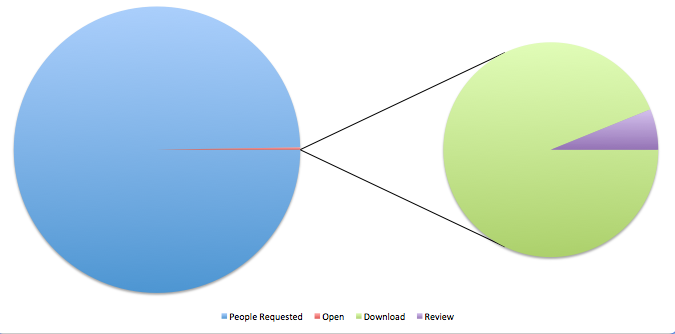
Chart showing percentage of people who review free downloads offered online (out of 100,000) – Source SPR 2015
Professional Reviews Are Trusted More Than Friends And Family
In fact, Lightspeed, a global market research company studied how audiences trust review sources. They found that buyers trust other consumers’ reviews 60% of the time, and professional reviewers’ 58% of the time, with only a 2% difference.
However, when this is added to those who answered neutrally, 28% and 33% respectively, it is amazing to discover that 8% find other customers’ reviews untrustworthy, only 1% less than professional reviewers, at 9%. In fact, professional reviews are trusted 8% more than reviews by friends and family.
The truth is, getting good exposure for your book on a well-trafficked website is only going to help sell books.
How People Look At Amazon Book Pages
We did an eyetracker study using the very popular, originally self-published book “Still Alice” by Lisa Genova. The eyetracker is a device that tracks eyeball movement as a user looks at the page and processes information.
The First Three Seconds
The circles show, in size of importance, where a user looks when they first come to the book page:
What we can see here is that the lower part of the book cover is madly important (even if it is Julianne Moore on the cover, this is a big result – you’ll see below the same result happens in the thumbnail for the SPACE book in Also Available).
The price is next, or of equal importance, along with making sure the author name is there.
Checking what is also available, i.e. a tendency to search for the next thing immediately is in there, which is part of how Amazon designs their site and psychology, hence the upsell prime position of the Kindle Reading App ripe to collect an email address.
The Look Inside feature is considered at this early stage of viewing. At this point, the reviews are not. This map shows the eyes’ priorities, as they scan the page. Note the “Buy Now” is not investigated either…So no kneejerk sales happening!
In fact, 79% of viewing happens most by the Look Inside:
Customer Reviews
As you can see from the eyetracking on the Customer Reviews page (if the viewer scans down from the Look Inside), the viewer looks at how many five star reviews the author has, and then immediately over at the Most Helpful Critical Review star rating! There is a glance over at the Most Helpful, but it seem the Critical Review is the most powerfully placed, and judged by the reader!
Learnings From The Study
It seems you’re going to be working a tough crowd to get a sale. They expect a decent book cover, a good price, and you need a lot of those five-star reviews to impress for a sale – that is, if your least favorable review isn’t too unfavorably starred or titled!
What Can I Do To Improve Sales?
Winning The Battle Might Win The War
Get professional book sites to feature your book. By getting the thumbs up from trusted names wins your buyer at least halfway to considering a sale once they reach your book page. If you have a few decent stars on Amazon, this could win sales.
Cut Your Losses
Even if you have a review that’s not too good, but has a less harsh star rating, you could quote this review on your website and social media alongside your five-star ones. Why not? It’s great to get 4 stars.
Get A Great Book Cover – In Thumbnail Size!
What does the lower half of your cover look like? Now how does it look SMALL? Maybe it’s time to get a new one designed by a professional. If it’s no good in thumbnail, it’s no good for sales. It might be expensive, but it’s an investment.
Put Your Editorial Reviews On Your Book Page
By adding your professional reviews into your Author Profile (Under Editorial Reviews) you will remind readers why they came to your page – and maybe they will see other reviews there too.
Build Your Own Mailing Lists With Fans
Using a mailing list of previous customers, or book fans that have signed up on your Facebook or webpage will give a good set of people to garner Customer Reviews from, and will give you a better hit rate than randomly sharing your book sale link online in groups and pages at random.
* This was investigated fully by SPR after a few amateur law/social media “hotshot” bloggers flagged we were an “advertising site.” I am glad to say their information was inaccurate, because we create original opinion – we are not showing advertisements written by the owner of the product, and we have used the product, and therefore do not come under this category, and instead are considered professional reviewers, a category covered by the FTC in a separate set of guidelines.Get an Editorial Review | Get Amazon Sales & Reviews | Get Edited | Get Beta Readers | Enter the SPR Book Awards | Other Marketing Services


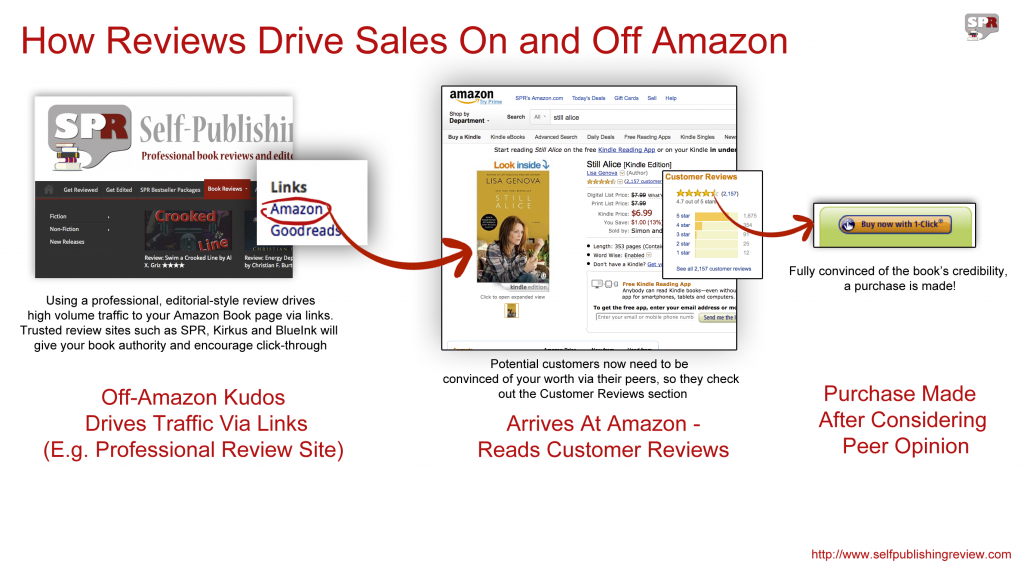
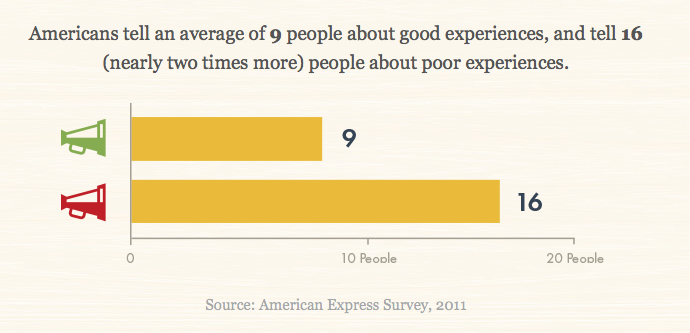
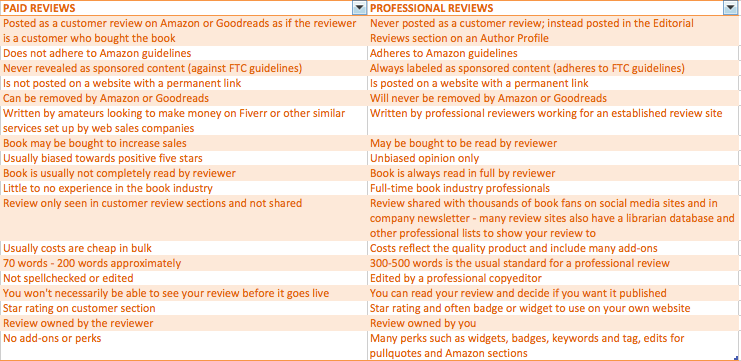
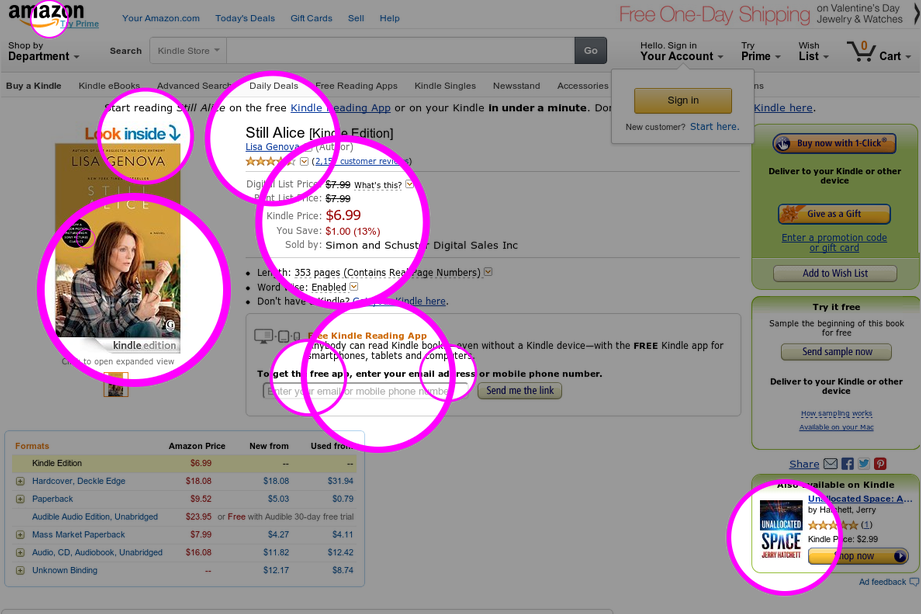
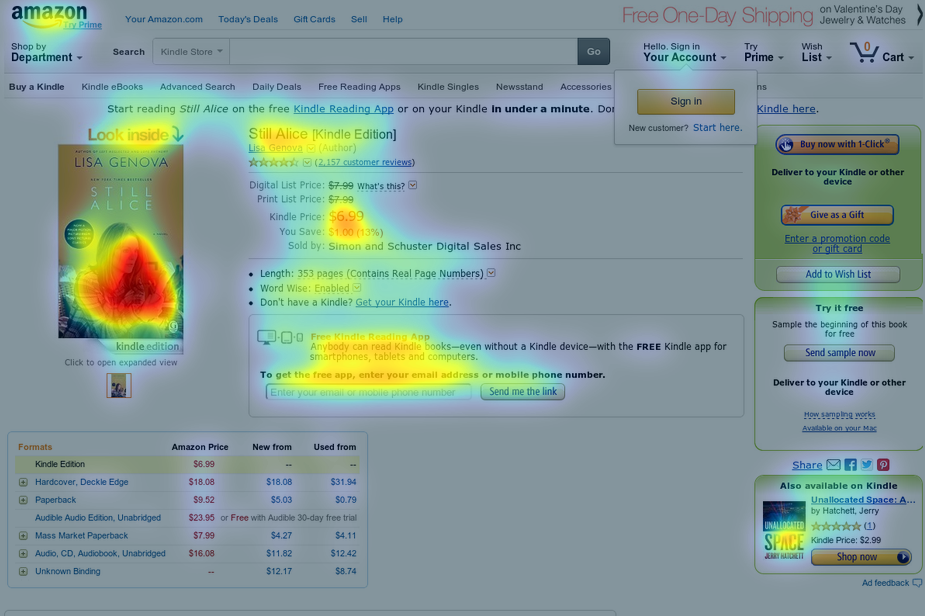
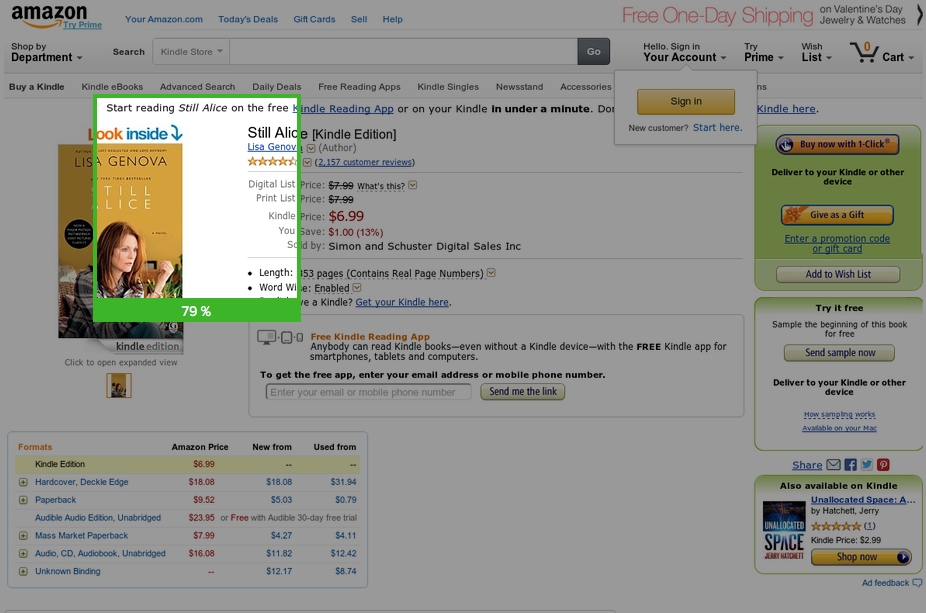
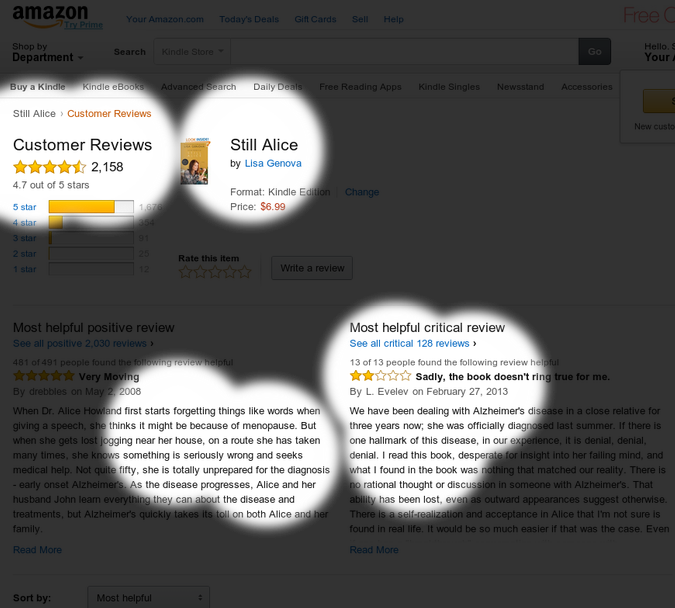




















Leave A Comment